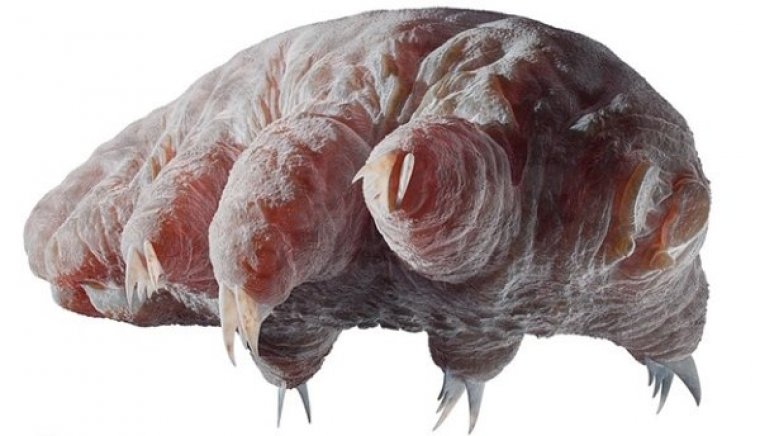| News / Science News |
How do microscopic creatures called tardigrades survive being completely dried out?
Researchers at the University of Wyoming have gained new insights into the biological processes that allow microscopic creatures called tardigrades to survive extreme conditions, including being completely dried out in suspended animation for years.

A reconstruction of the Siberian "Orsten" tardigrade, from the Cambrian Kuonamka Formation. Photo: PaleoEquii/Wikimedia Commons
Thomas Boothby, a Wyoming molecular biologist, and colleagues discovered how a sugar called trehalose works with proteins to allow tardigrades to survive a severe lack of water.
Measuring less than half a millimeter long, tardigrades — also known as water bears — can survive being completely dried out; being frozen to just above absolute zero (about minus 458 degrees Fahrenheit, when all molecular motion stops); heated to more than 300 degrees Fahrenheit; irradiated several thousand times beyond what a human could withstand; and even the vacuum of outer space.
Tardigrades' ability to survive being dried out has puzzled scientists, as they do so in a manner that appears to differ from other organisms with the ability to enter suspended animation.
At one time, scientists thought tardigrades did not manufacture trehalose to survive drying up, but Boothby and his team found that they do produce the sugar — just at lower levels than other organisms.
The researchers also found that, in tardigrades, trehalose works with another tardigrade-specific protein called CAHS D.
Ultimately, Boothby and other researchers hope that their discoveries can be applied to help solve societal and global health issues — in this case, water scarcity.
Their work might lead to better ways of stabilizing pharmaceuticals and generating engineered crops that can cope with harsh environments.
"A long-term goal is to understand how to confer the adaptation abilities of tardigrades to organisms that do not naturally survive drying," Boothby says.
"This study and its findings provide a compelling argument that to do so may require the combination of different synergistic protectants." (U.S. National Science Foundation)
YOU MAY ALSO LIKE





